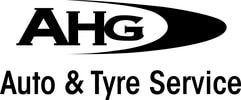Ford Engine with a Wet Timing Belt
The Ford engine that has a wet timing belt is the 1.0 EcoBoost engine. This engine uses a wet belt instead of the traditional timing belt, with the main difference being that the wet belt runs inside the engine rather than on the outside . The wet belt is constantly lubricated by the engine oil, which reduces friction and wear, extends the life of the belt, and contributes to better temperature management. Ford recommends replacing these belts every 10 years or 150,000 miles . However, it is worth noting that some vehicles may experience belt failure prior to the suggested replacement interval due to lack of servicing, poor maintenance, or incorrect oils used, so it is recommended to consider replacement around 8 years or 80,000 miles to be safe.
Please note that the wet timing belt system was introduced by several manufacturers, including Ford, PSA (now part of Stellantis), and VW, over 15 years ago. It was designed to have longer maintenance intervals, reduce fuel consumption and emissions, and provide better temperature management and noise reduction.
I hope this information helps! Let me know if you have any further questions.
Contents
- Which Ford engines are wet belt?
- What engines use a wet timing belt?
- Do Fords still have wet belt?
- Does the Transit connect have a wet belt or chain?
- Are wet timing belts any good?
- Does the Ford 1.5 EcoBoost have a timing belt?
- What Ford engines have belt driven oil pumps?
- Which EcoBoost engines have wet belts?
- What is the Ford Transit wet belt?
- Are Ford wet belts reliable?
Which Ford engines are wet belt?
The Ford 1.0 litre EcoBoost engines use a Wet Belt instead of the traditional Timing belt, the main difference is that the Wet Belt runs inside the engine and a timing belt runs on the outside of the engine.
What engines use a wet timing belt?
Vehicle manufacturers such as Ford, PSA, and Volkswagen use them. Wet belts are fully encased within the engine, whereas ‘dry’ systems are positioned outside of the engine crankcase.
Do Fords still have wet belt?
And the best part for Ford is the 1.0 Ecoboost and 1.5 which are timing chain in the last models still have a wet belt on the oil pump. So the timing chain models still have the engines die due to bits of rubber… in the oil pump.
Does the Transit connect have a wet belt or chain?
Yes, your 2008 Ford Transit Connect definitely has a timing chain encased in the engine. Timing chains are designed to last the life of the engine, but they can wear out over time, especially if the engine is not properly maintained.
Are wet timing belts any good?
When replacing a wet timing belt. There are no apparent signs to detect problems with the oil bath belt. However, if the wet belt is worn, the engine may have difficulty starting or run poorly at idle and operate erratically at high speeds. Although wet belts are less prone to breaking, their teeth can come loose.
Does the Ford 1.5 EcoBoost have a timing belt?
The 1.5L and 1.6L EcoBoost engines are what most of us would consider a normal timing belt: complicated to service, but kept clean and dry from exposure to engine oil. The 1.0L EcoBoost engine is a different beast and uses a wet belt design.
What Ford engines have belt driven oil pumps?
Yes, you read that right. The 1.0-liter, turbocharged three-cylinder found in the 2018 and later Ford EcoSport, as well as in certain model years and trims of the Fiesta and Focus, has an oil pump driven by a belt that Ford placed inside of the motor—and it’s prone to failures.
Which EcoBoost engines have wet belts?
The timing belt also known as a cambelt, is a critical component in any engine, but especially so in Ford’s 1.0L EcoBoost Engine. This engine utilises a “wet” timing belt design, meaning the belt runs through an oil bath for cooling and lubrication.
What is the Ford Transit wet belt?
The design and set up of the 2.0 Panther engines timing system involves what is known as a “wet belt”. The belt is ran in engine oil and connects the engines camshafts to the crankshaft via an idler gear, which also connects the high pressure fuel pump to the crank shaft.
Are Ford wet belts reliable?
The majority of issues reported with wet belts in EcoBoost engines have been with oil contamination and degrading of the belt over time, so the fact that you have followed the service schedule minimises the risk of a failure.

